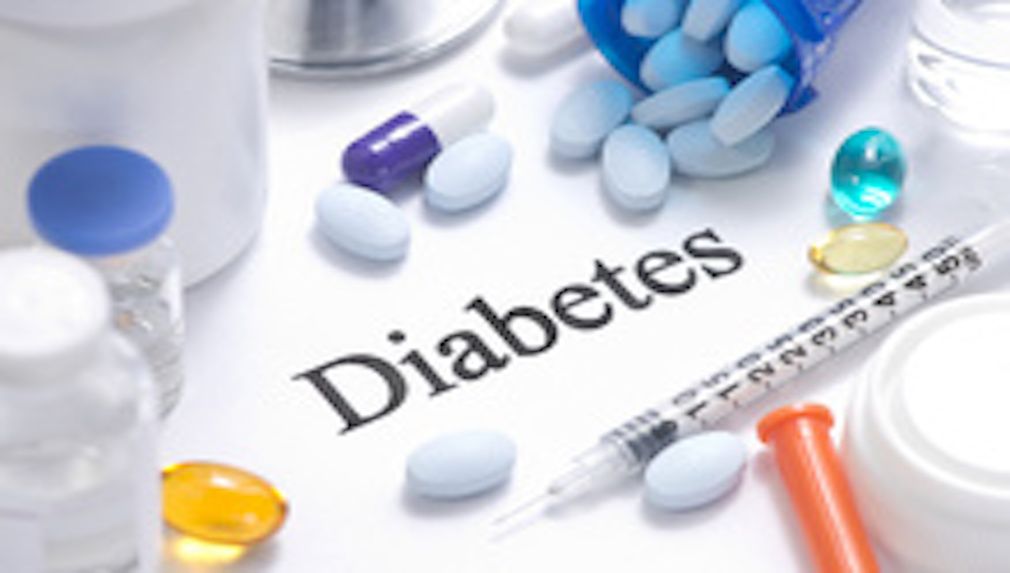Publication
Article
The American Journal of Managed Care
Health Care Resource Utilization Among Patients With T2D and Cardiovascular-, Heart Failure–, or Renal-Related Hospitalizations
Author(s):
Among patients with type 2 diabetes (T2D), concurrent cardiovascular-, heart failure–, or renal-related hospitalization presents significant disease burden leading to poor quality of life.
ABSTRACT
Objectives: In patients with type 2 diabetes (T2D), comorbidity-related hospitalizations can have significant impact on longitudinal care. This study aimed to estimate incremental all-cause health care resource utilization (HCRU) and costs between patients with T2D who experienced cardiovascular (CV)—, heart failure (HF)–, or renal-related hospitalizations vs those who did not.
Study Design: This was a retrospective cohort study using data from a large national health plan.
Methods: Patients with T2D aged 18 to 90 years with CV, HF, or renal hospitalizations were identified from the Humana claims database from October 1, 2009, to September 30, 2015, and separated into CV, HF, and renal cohorts. Patients had 12 months of continuous enrollment prior to the date of first hospitalization (index) and were followed for up to 12 months. Per-patient per-month (PPPM) all-cause HCRU and costs for hospitalized patients were compared with those of no-CV, no-HF, and no-renal cohorts. Differences in baseline characteristics between cohorts were controlled for using generalized linear models.
Results: A total of 221,229, 68,126, and 120,105 patients were included in the CV, HF, and renal cohorts, respectively; these patients were older and had higher Deyo-Charlson Comorbidity Index scores than patients in the no-CV, no-HF, and no-renal cohorts. Adjusted for baseline covariates, they had higher mean PPPM inpatient stays, outpatient visits, emergency department visits, and total health care costs.
Conclusions: Among patients with T2D, concurrent CV, HF, or renal events present significant disease burden leading to poor quality of life. This information can be used to guide disease management strategies and interventions aimed at reducing comorbidity-related hospitalizations and health care costs, thus providing improved quality of life for these patients.
Am J Manag Care. 2020;26(6):e166-e171. https://doi.org/10.37765/ajmc.2020.43491
Takeaway Points
This study aimed to estimate incremental all-cause health care resource utilization and costs (total, medical, and pharmacy) between patients with type 2 diabetes who experienced cardiovascular (CV)—, heart failure (HF)–, or renal-related hospitalizations vs those did not.
- Patients in the CV, HF, and renal cohorts were older and had higher Deyo-Charlson Comorbidity Index scores compared with patients in the no-CV, no-HF, and no-renal cohorts.
- Per-member per-month hospitalizations, office visits, emergency department visits, and health care costs were significantly higher in the CV, HF, and renal cohorts.
- Concurrent CV-, HF-, or renal-related hospitalization presents significant disease burden leading to poor quality of life.
Diabetes is a major public health concern in the United States; the American Diabetes Association (ADA) estimates that 24.7 million patients had a diagnosis of diabetes in the United States in 2017.1 Type 2 diabetes (T2D) accounts for 90% to 95% of all cases.2 Poorly controlled diabetes can cause macrovascular (eg, stroke, myocardial infarction) and microvascular (eg, neuropathy, nephropathy) complications.3-5 In addition to higher morbidity and mortality, diabetes is associated with direct health care costs of $237 billion in the United States, 29.4% of which are due to inpatient hospitalizations.1 In fact, of the projected 162 million hospital inpatient days in 2017, 22.6 million could be attributed to diabetes.1 The prevalence and economic burden of diabetes are increasing for patients 65 years and older, resulting in a greater financial burden to these patients and economic cost to the Medicare program.1,6
Patients with diabetes frequently experience comorbid conditions.3,7-11 The prevalence of these conditions was examined using data from the National Health and Nutrition Examination Survey (1999-2006), and the report revealed that for patients 60 years or older with diabetes, the proportions with comorbid coronary heart disease, stroke, congestive heart failure, and chronic kidney disease were 29.9%, 14.0%, 15.6%, and 40.0%, respectively.12 The high rate of comorbidities was expected because diabetes frequently occurs in multimorbidity (2 or more coexisting chronic conditions) clusters including hypertension, arthritis, and ischemic heart disease.13,14 For example, patients with comorbid diabetes and renal disease have a higher risk of cardiovascular (CV) mortality.15 Interestingly, the number of comorbid conditions has been reported to be higher for hospitalized patients with diabetes (2.6) compared with those without diabetes (1.3).6,16 As expected, management of patients with multimorbidity is challenging for a number of reasons, including low health system support, lack of guidance for health care professionals, impairment of patients’ overall health, and financial burden.17
One way to address the challenge of multimorbidity in patients with diabetes is through monitoring and early interventions to achieve glycemic control and treat comorbid conditions. This may be effective in reducing morbidity, mortality, and health care resource utilization (HCRU)18-20; however, real-world evidence is lacking in current literature regarding patient characteristics and HCRU for patients with T2D experiencing hospitalizations due to comorbid conditions such as CV-, heart failure (HF)—, or renal-related events. With the understanding that resource use and, therefore, likely costs will be higher in this population, the intent of the current study was to quantify the incremental HCRU and costs of specific comorbidity-related hospitalizations in patients with T2D in a primarily Medicare population.
METHODS
Study Design and Data Source
This was a retrospective cohort study using existing administrative claims data. The study was conducted using the Humana Inc health insurance claims database. The database contains integrated medical, pharmacy, behavioral, and laboratory-related claims, representing more than 12 million current and former Humana Medicare beneficiaries and commercially insured patients. The deidentified patient-level data include detailed use, outcomes, and cost data for health care services performed in inpatient and outpatient settings, prescription drug claims, and information on patient enrollment. The claims are linked through a patient identifier that remains constant regardless of benefit design, gap in coverage, or change of employer. These data have information for patients enrolled in commercial, Medicare Advantage, and prescription drug plans. The database has national coverage, with high proportions of members from Texas, Florida, and Ohio.
Study Population
The study period was from October 1, 2008, to September 30, 2016. Patients aged 18 to 90 years were identified during the 6-year identification period from October 1, 2009, to September 30, 2015 (Figure 1). Three separate cohorts of patients with at least 1 CV-, HF-, or renal-related hospitalization during the identification period were identified using International Classification of Diseases, Ninth Revision, Clinical Modification (ICD-9-CM) diagnosis codes (eAppendix Table 1 [eAppendix available at ajmc.com]). The codes for CV events and HF were mutually exclusive. The date of first observed CV-, HF-, or renal-related hospitalization (index hospitalization) was defined as the index date; the month was defined as the index month.
The comparator cohort was defined based on random selection of 1 comparison patient from a pool of all patients who had any medical claims during the index month but did not experience any CV hospitalization during the identification period, including the index month, for each patient with at least 1 CV hospitalization. Patients without CV hospitalizations could have HF- or renal-related hospitalizations. This process was repeated for all patients in the CV cohort, without replacement, until a ratio of 1:1 was achieved. The date of the first medical claim during the index month was defined as the index date for each patient within the comparator cohort.
Similarly, comparator cohorts of patients without HF- and renal-related hospitalizations were identified for the cohort of patients with HF-related hospitalizations and the cohort of patients with renal-related hospitalizations, respectively.
Patients with T2D were identified by having at least 1 prescription claim for insulin or an oral hypoglycemic or antihyperglycemic drug (eAppendix Table 1); at least 2 outpatient visits or a nonacute inpatient stay with a diagnosis code for T2D (ICD-9-CM codes 250.x0 or 250.x2) in any position; or at least 1 acute inpatient stay or emergency department (ED) visit with a diagnosis code for T2D in any position in the 12-month period preceding the index date (preindex period). Included patients were required to be continuously enrolled in a Medicare Advantage or commercial health plan during the 12-month preindex period.
Patients with gestational diabetes (ICD-9-CM 648.8x), pregnancy (ICD-9-CM V22.2), type 1 diabetes (ICD-9-CM 250.x1 or 250.x3), or polycystic ovary syndrome (ICD-9-CM 256.4) during the study period were excluded. In addition, patients with dual eligibility (patients enrolled in a Medicare plan who are also eligible for Medicaid) and residents of Puerto Rico were excluded. Patients in each cohort were followed for a minimum of 30 days post index date, including the index date, up to a maximum of 12 months.
Patient Characteristics
The following patient characteristics were evaluated in the 1-year preindex period for all cohorts: demographic, clinical, HCRU, and cost variables. Demographic characteristics included age, sex, race/ethnicity, line of business, geographical location, low-income subsidy status, and health plan type (health maintenance organization, preferred provider organization, fee-for-service or Medicare Advantage, or Part D). Clinical characteristics included mean count of pharmacy claims for oral antidiabetic medications, glucagon-like peptide-1 (GLP-1) agonists, insulins (eAppendix Table 2), and cardiovascular medications (eAppendix Table 3); Diabetes Complications Severity Index (DCSI) score (eAppendix Table 4); Deyo-Charlson Comorbidity Index (DCI) score (eAppendix Table 5)21; number of claims for glycated hemoglobin (A1C) tests (eAppendix Table 6); and baseline comorbid conditions (eAppendix Table 7).
Outcomes
Key outcome measures were incremental HCRU and costs (total, medical, and pharmacy) among CV, HF, and renal cohorts in the pre- and postindex periods. Patients were censored at the end of the follow-up period (12 months), disenrollment, or death, whichever occurred first.
Statistical Analyses
Baseline demographics, clinical, HCRU, and costs were reported (mean, SD, median, and interquartile range) and compared using t tests and χ2 tests between the following cohorts with T2D: CV cohort vs no-CV cohort, HF cohort vs no-HF cohort, and renal cohort vs no-renal cohort. All-cause HCRU was assessed during the pre- and postindex periods by type of service—namely, inpatient, outpatient, and ED visits. All-cause pharmacy, medical (inpatient, outpatient, and ED), and total (medical and pharmacy) costs were assessed during the pre- and postindex periods.
All costs were inflation adjusted to 2016 US dollars using the medical component of the US Consumer Price Index. HCRU and costs were reported on a per-patient per-month (PPPM) basis. Age-adjusted descriptive statistics were reported for all cost measures. Data from the CDC Behavioral Risk Factor Surveillance System were used to estimate the age distribution of the US population of patients with T2D. Sample statistics were weighted to reflect this distribution, providing more generalizable cost estimates.
Separate multivariate regression models within a generalized linear model framework were used to estimate the difference in all-cause HCRU and costs adjusted for differences in patient characteristics between the CV cohort vs the no-CV cohort, between the HF cohort vs the no-HF cohort, and between the renal cohort vs the no-renal cohort. The following demographic characteristics were used as covariates in the model: age, gender, race, region (Northeast, West, South, and Midwest), low-income subsidy eligibility, and population density (urban vs rural). The following clinical characteristics were used as covariates in the model: number of classes of oral antidiabetic medications, number of prescriptions for GLP-1 agonists, number of prescriptions for insulins, number of classes of CV medications, number of A1C tests, DCI score, prescribing physician specialty (primary care vs specialist), and common comorbidities. Gamma link was used for cost outcomes, whereas Poisson link was used for HCRU. HCRU by type (office visit, ED, inpatient, and total) and costs by type (medical, pharmacy, and total) were reported. SAS Enterprise Guide version 7.11 (SAS Institute) was used to conduct the analysis. Statistics with a P value of .05 or less were considered statistically significant.
RESULTS
Sample Characteristics
A total of 221,229 (92.4% Medicare), 68,126 (96.3% Medicare), and 120,105 (95.0% Medicare) patients met the criteria for inclusion in the CV, HF, and renal cohorts, respectively. Figure 2 indicates the number of included and excluded patients with T2D and with CV-, HF-, or renal-related hospitalizations as each step of inclusion and exclusion criteria was applied.
Baseline Demographic Characteristics
Baseline demographic characteristics were compared between the cohorts and their respective comparator cohorts (eAppendix Tables 8, 9, and 10). The CV, HF, and renal cohorts had higher mean ages (71.4, 73.5, and 73.1 years vs 67.5, 69.7, and 69.0 years, respectively; P < .0001) and had lower proportions of women compared with the no-CV, no-HF, and no-renal cohorts. A smaller proportion of patients in the CV, HF, and renal cohorts lived in the Southern region of the United States during the study time period compared with the no-CV, no-HF, and no-renal cohorts.
Baseline Clinical Characteristics
Baseline clinical characteristics were compared between the cohorts and their respective comparator cohorts (eAppendix Tables 11, 12, and 13). Mean DCSI and mean DCI scores were higher in the CV, HF, and renal cohorts compared with the no-CV, no-HF, and no-renal cohorts (DCSI: 2.35, 3.73, and 3.12 vs 1.38, 1.97, and 1.77, respectively; P < .0001; DCI: 2.50, 3.78, and 3.36 vs 1.81, 2.41, and 2.18, respectively; P < .0001). The mean count of A1C tests was lower in the CV, HF, and renal cohorts compared with the no-CV, no-HF, and no-renal cohorts (1.84, 1.81, and 1.85 vs 1.95, 2.03, and 2.02, respectively; P < .0001). Most comorbidities were higher in the CV, HF, and renal cohorts compared with the no-CV, no-HF, and no-renal cohorts.
Baseline HCRU and Cost Characteristics
Baseline HCRU and cost characteristics were compared between the cohorts and their respective comparator cohorts (eAppendix Tables 14, 15, and 16). All measures of HCRU and cost were significantly higher in the CV, HF, and renal Medicare cohorts compared with the no-CV, no-HF, and no-renal cohorts except outpatient visits; inpatient stays and ED visits were higher in the CV, HF, and renal cohorts compared with their counterpart cohorts (inpatient: 18.7%, 51.0%, and 40.6% vs 5.1%, 20.3%, and 16.4%, respectively; P < .0001; ED: 40.9%, 60.7%, and 54.8% vs 18.8%, 30.6%, and 27.3%, respectively; P < .0001). Mean health care cost PPPM was higher in the CV, HF, and renal cohorts compared with the no-CV, no-HF, and no-renal cohorts ($936.70, $2046.30, and $1582.10 vs $548.90, $948.70, and $809.70, respectively; P < .0001). Mean medical and pharmacy costs PPPM were also higher in the CV, HF, and renal cohorts compared with their counterpart cohorts (eAppendix Tables 14, 15, and 16).
All-Cause HCRU and Costs Adjusted for Covariates in Postindex Period
CV vs no-CV cohorts. During follow-up among all patients, mean numbers of inpatient stays, outpatient visits, and ED visits PPPM, adjusted for covariates, were higher in the CV cohort compared with the no-CV cohort (inpatient: 0.10 vs 0.01; P < .0001; outpatient: 1.44 vs 0.82; P < .0001; ED: 0.17 vs 0.02; P < .0001) (Table 1). Adjusted mean health care costs PPPM were approximately 5-fold higher in the CV cohort compared with the no-CV cohort ($2686 vs $510; P < .0001). Medical costs, the major contributor to health care costs, were higher in the CV cohort compared with the no-CV cohort after adjusting for covariates ($2642 vs $366 PPPM; P < .0001). Adjusted pharmacy costs PPPM were also higher in the CV cohort compared with the no-CV cohort ($138 vs $98; P < .0001).
HF vs no-HF cohorts. Similar to the CV and no-CV cohorts, mean numbers of inpatient stays, outpatient visits, and ED visits PPPM, adjusted for covariates, were higher in the HF cohort compared with the no-HF cohort (inpatient: 0.17 vs 0.03; P < .0001; outpatient: 1.73 vs 1.00; P < .0001; ED: 0.25 vs 0.04; P < .0001) (Table 2). Adjusted mean health care costs PPPM were 4-fold higher in the HF cohort compared with the no-HF cohort ($4111 vs $930; P < .0001). As in the CV and no-CV cohorts, medical costs, the major contributor to health care costs, were higher in the HF cohort compared with the no-HF cohort after adjusting for covariates ($3940 vs $753 PPPM; P < .0001). Adjusted pharmacy costs PPPM were also higher in the HF cohort compared with the no-HF cohort ($177 vs $131; P < .0001).
Renal vs no-renal cohorts. Findings in the renal and no-renal cohorts were similar to those from the CV, no-CV, HF, and no-HF cohorts. Mean number of inpatient stays, outpatient visits, and ED visits PPPM, adjusted for covariates, were higher in the renal cohort compared with the no-renal cohort (inpatient: 0.14 vs 0.02; P < .0001; outpatient: 1.61 vs 0.93; P < .0001; ED: 0.21 vs 0.03; P < .0001) (Table 3). Further, adjusted mean health care costs PPPM were approximately 4-fold higher in the renal cohort compared with the no-renal cohort ($3703 vs $774; P < .0001). Medical costs were higher in the renal cohort compared with the no-renal cohort after adjusting for covariates ($3612 vs $614 PPPM; P < .0001) and, as in the CV and HF cohorts, were the major contributor to health care costs. Similar to the other comparisons, adjusted pharmacy costs PPPM were higher in the renal cohort compared with the no-renal cohort ($171 vs $117; P < .0001).
DISCUSSION
Our study contributes to the current literature by examining real-world evidence for patients with T2D with regard to comorbid conditions resulting in incremental HCRU and subsequent costs. We found that, after adjusting for covariates, cohorts with comorbidity-related hospitalizations had approximately 6- to 10-fold higher inpatient hospitalizations, 1.7-fold higher outpatient visits, and 6- to 9-fold higher ED visits. Total health care costs were 4- to 5-fold higher in patients with comorbidity-related hospitalizations; a large proportion of these costs stemmed from medical expenses.
Interestingly, the CV, HF, and renal cohorts had lower mean numbers of classes of oral antidiabetic medications and of prescriptions for GLP-1 agonists but higher mean numbers of prescriptions for insulins. This finding suggests that amid the burden of T2D and competing interests in effectively managing modifiable metabolic risk factors, patients may be receiving more insulin compared with other antidiabetic agents. Future research should look into insulin prescribing in these groups over a longer time window and assess whether there is a greater increase in prescribing in one group over another.
Similar to our findings, results reported by the ADA and others have shown rising HCRU and costs in patients with diabetes.1,7,22 This may be expected because patients with T2D have a high comorbidity burden2,6,16 and are at higher risks of hospitalization and death.3 Our results reflect these facts and are in agreement with studies that have reported increases in HCRU and costs between patients with and without comorbid HF or CV disease.23-25 Bogner et al, using data from a Medicare claims database, reported that patients with comorbid diabetes and HF had higher annual average total costs ($32,676) compared with patients with diabetes and without HF ($10,566) and higher average lengths of inpatient stays (26.6 days vs 9.9 days).23 Other studies focused on increases in resource utilization and costs due to comorbid CV disease or HF during the last months of life.24,25 A large proportion of these costs are expected to be borne by patients 65 years and older enrolled in Medicare health plans.1
Besides the direct cost of treating comorbid conditions, higher HCRU and costs in patients with diabetes and concurrent comorbidities may be due to several reasons. Existence of multiple comorbidities presents great challenges to physicians treating patients with diabetes, when screening and treatment needs can far exceed the limited time available during a typical office visit.17,26 Comorbidities can also directly or indirectly hamper self-management when they take a toll on the patient’s functional ability and/or mental health, resulting in lower quality of life and less desirable health outcomes.27-30 On a positive note, the comorbid conditions studied in this research—namely, CV disease, HF, and renal disease—are considered “concordant” with diabetes under the typology proposed by Piette and Kerr, meaning they share common parts of the same overall pathophysiologic risk profile and thus are more likely to be addressed concurrently within the same disease management plan.17 Given the burden of these comorbidities and their concordant nature, there are opportunities to prioritize the comanagement of these conditions and improve health outcomes in patients with T2D. In fact, frameworks have been proposed to identify points of intervention and improve care for patients with multiple chronic conditions,31 specifically for those with concurrent diabetes and comorbidities.17 This work will be important to build out, in particular for health plans and health care stakeholders to continue to support and promote care coordination activities.
Limitations
This study has several limitations, including that this was a retrospective observational study using administrative claims data. Therefore, all information captured assumes completeness of the record of medical visits. Also, lack of laboratory values in the claims data limits the study in determining the incremental cost burden while adjusting for certain clinical factors relevant to the population with diabetes, such as A1C and estimated glomerular filtration rate. Additionally, this study utilized data with a Medicare-rich member population, so the results may not be generalizable, particularly to commercial plans, although these plans are provided to large numbers of members with diverse characteristics who reside in a broad array of geographic regions. No causal inference can be ascertained from this study because it is an observational study utilizing retrospective claims data. Finally, relationships between inpatient hospitalization status and outcomes were established based on statistical associations and temporal relationships; as such, causal inference may not be directly determined.
CONCLUSIONS
After controlling for baseline differences in patient characteristics, patients with T2D experiencing CV-, HF-, or renal-related hospitalizations incurred higher HCRU and costs compared with those not experiencing these hospitalizations. Such information could help multiple health care stakeholders develop targeted disease management plans leading to improved outcomes for these patients.Author Affiliations: Humana Healthcare Research Inc (SA, YL, CM), Louisville, KY; Boehringer Ingelheim Pharmaceuticals Inc (SG, SS), Ridgefield, CT; Humana Inc (TP), Louisville, KY.
Source of Funding: Boehringer Ingelheim Pharmaceuticals Inc.
Author Disclosures: Mr Ghosh is a former employee of Boehringer Ingelheim, which markets therapeutic products with indications for type 2 diabetes and cardiovascular disease. Dr Li is a salaried employee of Humana Healthcare Research. Dr Shetty is employed by Boehringer Ingelheim. Dr Prewitt receives salary from and owns stock in his employer, Humana. The remaining authors report no relationship or financial interest with any entity that would pose a conflict of interest with the subject matter of this article.
Authorship Information: Concept and design (SA, SG, YL, CM, SS, TP); acquisition of data (SG, YL); analysis and interpretation of data (SA, SG, YL, CM); drafting of the manuscript (SA, YL, CM, SS); critical revision of the manuscript for important intellectual content (YL, CM, SS, TP); statistical analysis (YL); obtaining funding (SG); and supervision (SG, YL, TP).
Address Correspondence to: Yong Li, PhD, Humana Healthcare Research Inc, 515 Market St, Louisville, KY 40202. Email: yli4@humana.com.REFERENCES
1. American Diabetes Association. Economic costs of diabetes in the U.S. in 2017. Diabetes Care. 2018;41(5):917-928. doi:10.2337/dci18-0007
2. National diabetes statistics report, 2017. American Diabetes Association. 2017. Accessed May 31, 2019. https://dev.diabetes.org/sites/default/files/2019-06/cdc-statistics-report-2017.pdf
3. Cavender MA, Steg PG, Smith SC Jr, et al. Impact of diabetes mellitus on hospitalization for heart failure, cardiovascular events, and death: outcomes at 4 years from the Reduction of Atherothrombosis for Continued Health (REACH) registry. Circulation. 2015;132(10):923-931. doi:10.1161/CIRCULATIONAHA.114.014796
4. National Diabetes Data Group. Diabetes in America. 2nd ed. National Institutes of Health, National Institute of Diabetes and Digestive and Kidney Diseases; 1995.
5. Campbell RK. Type 2 diabetes: where we are today: an overview of disease burden, current treatments, and treatment strategies. J Am Pharm Assoc (2003). 2009;49(suppl 1):S3-S9. doi:10.1331/JAPhA.2009.09077
6. Costantino ME, Stacy JN, Song F, Xu Y, Bouchard JR. The burden of diabetes mellitus for Medicare beneficiaries. Popul Health Manag. 2014;17(5):272-278. doi:10.1089/pop.2013.0097
7. Fraze T, Jiang HJ, Burgess J. Hospital stays for patients with diabetes, 2008. Agency for Healthcare Research and Quality. August 2010. Accessed May 31, 2019. https://www.hcup-us.ahrq.gov/reports/statbriefs/sb93.pdf
8. Murphy D, McCulloch CE, Lin F, et al; Centers for Disease Control and Prevention Chronic Kidney Disease Surveillance Team. Trends in prevalence of chronic kidney disease in the United States. Ann Intern Med. 2016;165(7):473-481. doi:10.7326/M16-0273
9. Stratton IM, Adler AI, Neil HA, et al. Association of glycaemia with macrovascular and microvascular complications of type 2 diabetes (UKPDS 35): prospective observational study. BMJ. 2000;321(7258):405-412. doi:10.1136/bmj.321.7258.405
10. Iribarren C, Karter AJ, Go AS, et al. Glycemic control and heart failure among adult patients with diabetes. Circulation. 2001;103(22):2668-2673. doi:10.1161/01.cir.103.22.2668
11. Williams R, Van Gaal L, Lucioni C; CODE-2 Advisory Board. Assessing the impact of complications on the costs of type II diabetes. Diabetologia. 2002;45(7):S13-S17. doi:10.1007/s00125-002-0859-9
12. Kalyani RR, Saudek CD, Brancati FL, Selvin E. Association of diabetes, comorbidities, and A1C with functional disability in older adults: results from the National Health and Nutrition Examination Survey (NHANES), 1999-2006. Diabetes Care. 2010;33(5):1055-1060. doi:10.2337/dc09-1597
13. Ward BW, Schiller JS. Prevalence of multiple chronic conditions among US adults: estimates from the National Health Interview Survey, 2010. Prev Chronic Dis. 2013;10:E65. doi:10.5888/pcd10.120203
14. Schäfer I, von Leitner EC, Schön G, et al. Multimorbidity patterns in the elderly: a new approach of disease clustering identifies complex interrelations between chronic conditions. PloS One. 2010;5(12):e15941. doi:10.1371/journal.pone.0015941
15. Fox CS, Matsushita K, Woodward M, et al; Chronic Kidney Disease Prognosis Consortium. Associations of kidney disease measures with mortality and end-stage renal disease in individuals with and without diabetes: a meta-analysis. Lancet. 2012;380(9854):1662-1673. doi:10.1016/S0140-6736(12)61350-6. Published correction appears in Lancet. 2013;381(9864):374. doi:10.1016/S0140-6736(13)60172-5
16. Dall TM, Mann SE, Zhang Y, et al. Distinguishing the economic costs associated with type 1 and type 2 diabetes. Popul Health Manag. 2009;12(2):103-110. doi:10.1089/pop.2009.12203
17. Piette JD, Kerr EA. The impact of comorbid chronic conditions on diabetes care. Diabetes Care. 2006;29(3):725-731. doi:10.2337/diacare.29.03.06.dc05-2078
18. Ware MG, Flavell CM, Lewis EF, Nohria A, Warner-Stevenson L, Givertz MM. Heart failure and diabetes: collateral benefit of chronic disease management. Congest Heart Fail. 2006;12(3):132-136. doi:10.1111/j.1527-5299.2005.05354.x
19. Zinman B, Wanner C, Lachin JM, et al; EMPA-REG OUTCOME Investigators. Empagliflozin, cardiovascular outcomes, and mortality in type 2 diabetes. N Engl J Med. 2015;373(22):2117-2128. doi:10.1056/NEJMoa1504720
20. Wanner C, Inzucchi SE, Lachin JM, et al; EMPA-REG OUTCOME Investigators. Empagliflozin and progression of kidney disease in type 2 diabetes. N Engl J Med. 2016;375(4):323-334. doi:10.1056/NEJMoa1515920
21. Deyo RA, Cherkin DC, Ciol MA. Adapting a clinical comorbidity index for use with ICD-9-CM administrative databases. J Clin Epidemiol. 1992;45(6):613-619. doi:10.1016/0895-4356(92)90133-8
22. McDermott KW, Elixhauser A, Sun R. Trends in hospital inpatient stays in the United States, 2005-2014. Agency for Healthcare Research and Quality. June 2017. Accessed May 31, 2019.
https://www.hcup-us.ahrq.gov/reports/statbriefs/sb225-Inpatient-US-Stays-Trends.jsp
23. Bogner HR, Miller SD, de Vries HF, Chhatre S, Jayadevappa R. Assessment of cost and health resource utilization for elderly patients with heart failure and diabetes mellitus. J Card Fail. 2010;16(6):454-460. doi:10.1016/j.cardfail.2010.01.007
24. Shetty S, Stafkey-Mailey D, Yue B, et al. The cost of cardiovascular-disease-related death in patients with type 2 diabetes mellitus. Curr Med Res Opin. 2018;34(6):1081-1087. doi:10.1080/03007995.2018.1445620
25. Obi EN, Swindle JP, Turner SJ, Russo PA, Altan A. Health care costs for patients with heart failure escalate nearly 3-fold in final months of life. J Manag Care Spec Pharm. 2016;22(12):1446-1456. doi:10.18553/jmcp.2016.22.12.1446
26. Yarnall KS, Pollak KI, Østbye T, Krause KM, Michener JL. Primary care: is there enough time for prevention? Am J Public Health. 2003;93(4):635-641. doi:10.2105/ajph.93.4.635
27. Ciechanowski PS, Katon WJ, Russo JE. Depression and diabetes: impact of depressive symptoms on adherence, function, and costs. Arch Intern Med. 2000;160(21):3278-3285. doi:10.1001/archinte.160.21.3278
28. Krein SL, Heisler M, Piette JD, Makki F, Kerr EA. The effect of chronic pain on diabetes patients’ self-management. Diabetes Care. 2005;28(1):65-70. doi:10.2337/diacare.28.1.65
29. Schoenberg NE, Drungle SC. Barriers to non-insulin dependent diabetes mellitus (NIDDM) self-care practices among older women. J Aging Health. 2001;13(4):443-466. doi:10.1177/089826430101300401
30. Glasgow RE, Ruggiero L, Eakin EG, Dryfoos J, Chobanian L. Quality of life and associated characteristics in a large sample of adults with diabetes. Diabetes Care. 1997;20(4):562-567. doi:10.2337/diacare.20.4.562
31. About the Multiple Chronic Conditions Initiative. HHS. September 2011. Accessed May 31, 2019. https://www.hhs.gov/ash/about-ash/multiple-chronic-conditions/about-mcc/index.html












How Can Employers Leverage the DPP to Improve Diabetes Rates?

How Can Employers Leverage the DPP to Improve Diabetes Rates?
2 Commerce Drive
Suite 100
Cranbury, NJ 08512
© 2025 MJH Life Sciences® and AJMC®.
All rights reserved.





